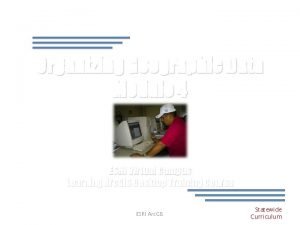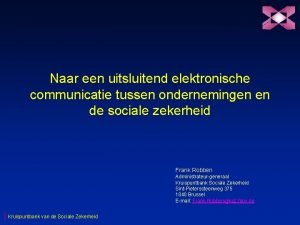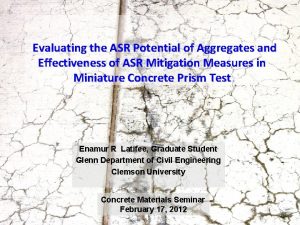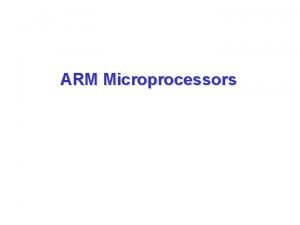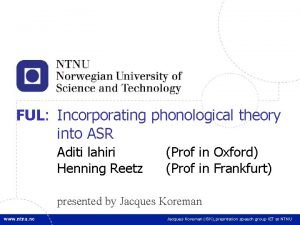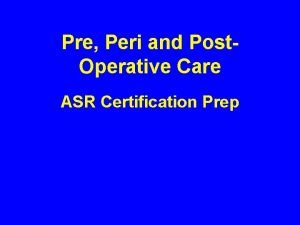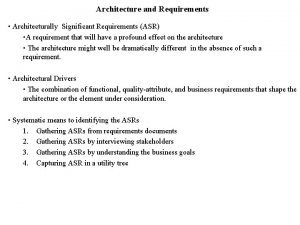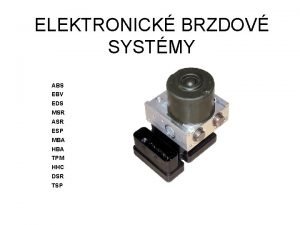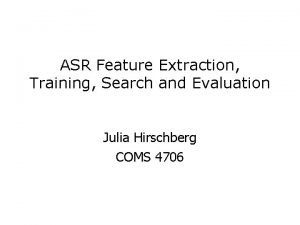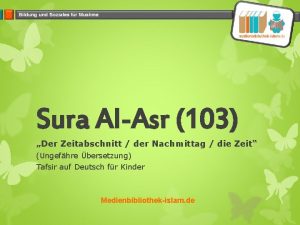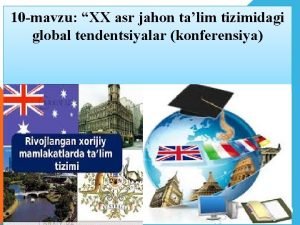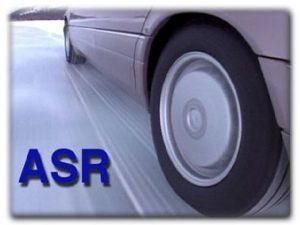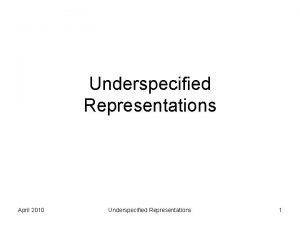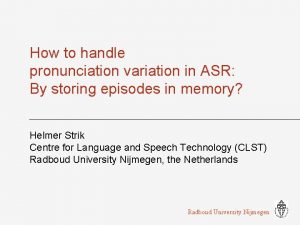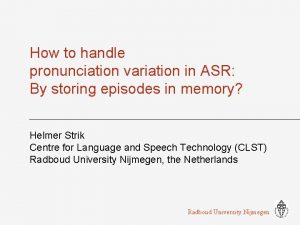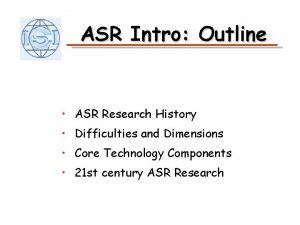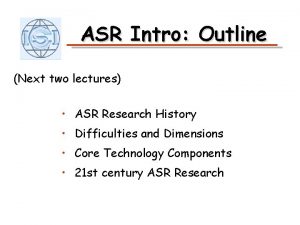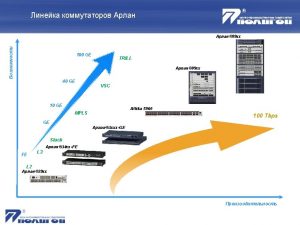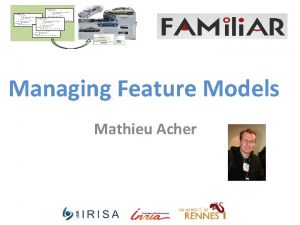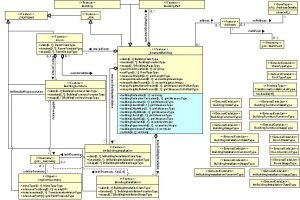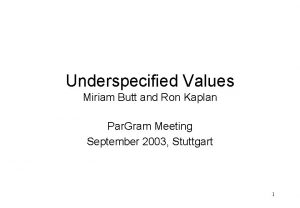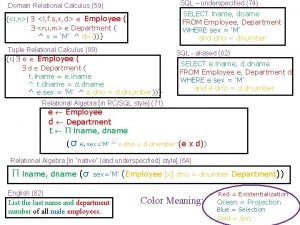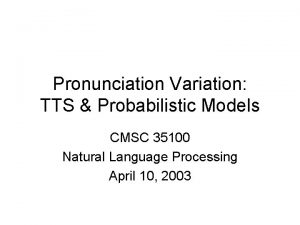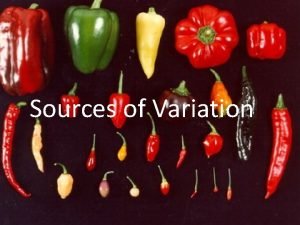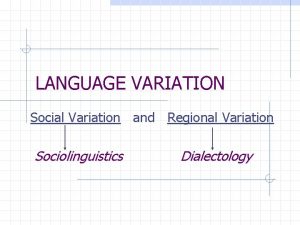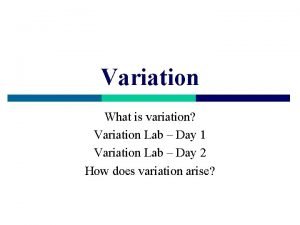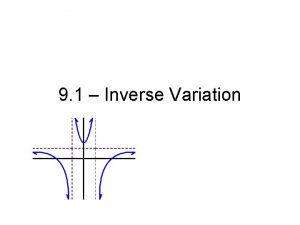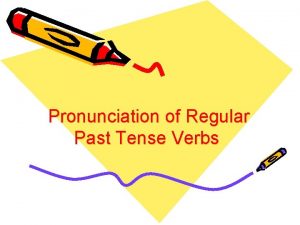Underspecified feature models for pronunciation variation in ASR





































- Slides: 37

Underspecified feature models for pronunciation variation in ASR Eric Fosler-Lussier The Ohio State University Speech & Language Technologies Lab ITRW - Speech Recognition & Intrinsic Variation 20 May 2006

Introduction Why features? Role of transcription Approaches Vision Fill in the blanks • 3, 6, __, 12, 15, __, 21, 24 • A B C __ E F __ H • You’re going to Toulouse? Drink a bottle of _____ for me! • What’s the red object? We’re very good at filling in the blanks when we have context! Fosler-Lussier / Underspecified Feature Models ITRW Speech Recognition and Intrinsic Variation

Introduction Why features? Role of transcription Approaches Vision Filling in the blanks: missing data • Missing data approaches have been used to integrate over noisy acoustics Wang & Hu 06 Fosler-Lussier / Underspecified Feature Models ITRW Speech Recognition and Intrinsic Variation

Introduction Why features? Role of transcription Approaches Decode this! (brackets indicate options) s iy n y {ah, axr, er} {l, r} {eh, iy} s er ch {ah, ax} s ow {s, sh, z, zh} {eh, iy} {eh, ey} {t, d} Fosler-Lussier / Underspecified Feature Models ITRW Speech Recognition and Intrinsic Variation Vision

Introduction Why features? Role of transcription Approaches Decode this! (brackets indicate options) s iy n y {ah, axr, er} senior {l, r} {eh, iy} s er ch research {ah, ax} s ow {s, sh, z, zh} {eh, iy} {eh, ey} {t, d} associate Fosler-Lussier / Underspecified Feature Models ITRW Speech Recognition and Intrinsic Variation Vision

Introduction Why features? Role of transcription Approaches Decode this! (brackets indicate options) s iy n y {ah, axr, er} senior {l, r} {eh, iy} s er ch research {ah, ax} s ow {s, sh, z, zh} {eh, iy} {eh, ey} {t, d} associate dictionary pronunciation Fosler-Lussier / Underspecified Feature Models ITRW Speech Recognition and Intrinsic Variation Vision

Introduction Why features? Role of transcription Approaches Decode this! (brackets indicate options) s iy n y {ah, axr, er} senior {l, r} {eh, iy} s er ch research {ah, ax} s ow {s, sh, z, zh} {eh, iy} {eh, ey} {t, d} associate dictionary pronunciation as marked by transcribers (Buckeye Corpus of Speech) Fosler-Lussier / Underspecified Feature Models ITRW Speech Recognition and Intrinsic Variation Vision

Introduction Why features? Role of transcription Approaches What do these tasks have in common? • Recovering from erroneous information? – Context plays a big role in helping “clean up” Fosler-Lussier / Underspecified Feature Models ITRW Speech Recognition and Intrinsic Variation Vision

Introduction Why features? Role of transcription Approaches What do these tasks have in common? • Recovering from erroneous information? – Context plays a big role in helping “clean up” • Recovering from incomplete information! – We should be treating pronunciation variation as a missing data problem • Integrate over “missing” phonological features – How much information do you need to decode words? • Particularly taking into account the context of the word, syllabic context of phones, etc… • Information theory problem Fosler-Lussier / Underspecified Feature Models ITRW Speech Recognition and Intrinsic Variation Vision

Introduction Why features? Role of transcription Approaches Vision Outline • Problems with phonetic representations of variation – Potential advantages of phonological features • Re-examining the role of phonetic transcription • Phonological feature approaches to ASR – Feature attribute detection – Feature combination methods – Learning to (dis-)trust features • A challenge for the future Fosler-Lussier / Underspecified Feature Models ITRW Speech Recognition and Intrinsic Variation

Introduction Why features? Role of transcription Approaches “The Case Against The Phoneme” Homage to Ostendorf (ASRU 99) • Four major indications that phonetic modeling of variation is not appropriate: Fosler-Lussier / Underspecified Feature Models ITRW Speech Recognition and Intrinsic Variation Vision

Introduction Why features? Role of transcription Approaches “The Case Against The Phoneme” Homage to Ostendorf (ASRU 99) • Four major indications that phonetic modeling of variation is not appropriate: – Lack of progress on spontaneous speech WER • Mc. Allaster et al (98): 50% improvement possible • Finke & Waibel (97): 6% WER reduction Fosler-Lussier / Underspecified Feature Models ITRW Speech Recognition and Intrinsic Variation Vision

Introduction Why features? Role of transcription Approaches “The Case Against The Phoneme” Homage to Ostendorf (ASRU 99) Vision • Four major indications that phonetic modeling of variation is not appropriate: – Lack of progress on spontaneous speech WER – Independence of decisions in phone-based models • When pronunciation variation is modeled on phone-byphone level, unusual baseforms are often created Riley et al 98 • Word-based learning fails to generalize across words Fosler-Lussier / Underspecified Feature Models ITRW Speech Recognition and Intrinsic Variation

Introduction Why features? Role of transcription Approaches “The Case Against The Phoneme” Homage to Ostendorf (ASRU 99) Vision • Four major indications that phonetic modeling of variation is not appropriate: – Lack of progress on spontaneous speech WER – Independence of decisions in phone-based models – Lack of granularity • Triphone contexts mean a symbolic change in phone can affect 9 HMM states (min 90 msec) Saraçlar et al 00 • Much variation is already handled by triphone context Jurafsky et al 01 Fosler-Lussier / Underspecified Feature Models ITRW Speech Recognition and Intrinsic Variation

Introduction Why features? Role of transcription Approaches “The Case Against The Phoneme” Homage to Ostendorf (ASRU 99) • Four major indications that phonetic modeling of variation is not appropriate: – Lack of progress on spontaneous speech WER – Independence of decisions in phone-based models – Lack of granularity – Difficulty in transcription • Phonetic transcription is expensive and time consuming • Many decisions difficult to make for transcribers Fosler-Lussier / Underspecified Feature Models ITRW Speech Recognition and Intrinsic Variation Vision

Introduction Why features? Role of transcription Approaches Vision Using phonological features • Finer granularity – Some phonological changes don’t result in canonical phones for a language • English: uw can sometimes be fronted (toot) • Common enough: TIMIT introduced a special phone (ux) • Symbol change loses all commonality between phones (uw->ux) – Handling odd phonological effects • Phone deletions: many “deletions” really leave small traces of coarticulation on neighboring segments • E. g. vowel nasalization with nasal deletion • Features may provide basis for cross-lingual recognition • International Phonetic Alphabet Fosler-Lussier / Underspecified Feature Models ITRW Speech Recognition and Intrinsic Variation

Introduction Why features? Role of transcription Approaches Issues with phonological features • Interlingua: “high vowels in English are not the same as high vowels in Japanese” – Richard Wright, lunch Wednesday, ICASSP 2006 • Concept of “independent directions” false – Correlation of feature values – Distances no longer euclidean among feature dimensions • Dealing with feature spreading • Even more difficulty in transcription – (but: Karen Livescu’s group, JHU workshop 2006) • Articulatory vs. acoustic features – No two definitions are exactly the same (see Richard’s talk) Fosler-Lussier / Underspecified Feature Models ITRW Speech Recognition and Intrinsic Variation Vision

Introduction Why features? Role of transcription Approaches Vision Phonetic transcription • There have been a number of efforts to transcribe speech phonetically – American English • TIMIT (4 hr read speech) • Switchboard (4 hr spontaneous speech) • Buckeye Corpus (40 hr spontaneous speech) http: //buckeyecorpus. osu. edu • ASR researchers have found it difficult to utilize phonetic transcriptions directly Fosler-Lussier / Underspecified Feature Models ITRW Speech Recognition and Intrinsic Variation Riley et al 99

Introduction Why features? Role of transcription Approaches ASR & Phonetic Transcription • Saraclar & Khudanpur (04) examined the means of acoustic models where canonical phone /x/ was transcribed as [y] over all pairs x: y – Compared means of x: y to x: x, y: y – Data showed that x: y means often fell between x: x and y: y, sometimes closer to x: x • Another view: data from Buckeye Corpus – /ae/ is sometimes transcribed as [eh] – Examined 80 vowels from one speaker • Formant frequencies from center of vowel Fosler-Lussier / Underspecified Feature Models ITRW Speech Recognition and Intrinsic Variation Vision

Fosler-Lussier / Underspecified Feature Models ITRW Speech Recognition and Intrinsic Variation

higher than eh mixed ae/eh ae territory opposite side of ae from eh Fosler-Lussier / Underspecified Feature Models ITRW Speech Recognition and Intrinsic Variation

Introduction Why features? Role of transcription Approaches Can you trust transcription? • Perceptual marking ≠ acoustic measurement – Can’t take transcription at face value • What are the transcribers are trying to tell us? – This phone doesn’t sound like a canonical phone – Perhaps we can look at commonalities across canonical/transcribed phone • ae: eh -> front vowel (& not high? ) • Phonological features may help us represent transcription differences. Fosler-Lussier / Underspecified Feature Models ITRW Speech Recognition and Intrinsic Variation Vision

Introduction Why features? Role of transcription Approaches Vision Variation in single-phone changes • Compared canonical vs. transcribed consonants with single-phone substitutions in Switchboard, Buckeye – Differences in manner, place, voicing counted Manner Place Voicing SWB % BCS % 42. 1 41. 5 7. 3 13. 8 39. 7 27. 1 8. 2 12. 5 1. 4 1. 5 0. 0 1. 1 0. 7 2. 1 Fosler-Lussier / Underspecified Feature Models ITRW Speech Recognition and Intrinsic Variation single dimension common manner, voicing variants more common than place

Introduction Why features? Role of transcription Approaches Recent approaches to feature modeling in ASR • Since 90’s there has been increased interest in phonological feature modeling – Deng et al (92 ff), Kirchhoff (96 ff) • Current directions of research – Approaches for detecting phonological features from data – Methods of combining phonological features – Knowing when to ignore information Fosler-Lussier / Underspecified Feature Models ITRW Speech Recognition and Intrinsic Variation Vision

Introduction Why features? Role of transcription Approaches Feature detection methods • Frame-level decisions – Most common: artificial neural network methods • Input: various flavors of spectral/cepstral representations • Output: estimating posterior P(feature|acoustics) on a perframe level – Recent competitor: support vector machines • Typically used for binary decision problems • Segmental-level decisions: integrate over time – HMM detectors – Hybrid ANN/Dynamic Bayesian Network Fosler-Lussier / Underspecified Feature Models ITRW Speech Recognition and Intrinsic Variation Vision

Introduction Why features? Role of transcription Approaches Binary vs. n-ary features • Features can either be described as binary or n-ary if they can contrast – Binary: /t/ : +stop -fricative … – N-ary: /t/ : manner=stop • No real conclusion on whether which is better – Binary more matched to SVM learning – N-ary allows for discrimination among classes • Should a segment be allowed to be +stop +fricative? – Anecdotally (our lab) we find n-ary features slightly better Fosler-Lussier / Underspecified Feature Models ITRW Speech Recognition and Intrinsic Variation Vision

Introduction Why features? Role of transcription Approaches Hierarchical representations • Phonological features are not truly independent – Chang et al (01): Place prediction improves if manner is known • ANN predicts P(place=x|manner=y, X) vs P(place=x|X) • Suggests need for hierarchical detectors – Rajamanohar & Fosler-Lussier (05): Cascading errors make chained decisions worse • Better to jointly model P(place=x, manner=y|X), or even derive P(place=x|X) from phone probabilities – Frankel et al (04): Hierarchy can be integrated as additional dependencies in DBN Fosler-Lussier / Underspecified Feature Models ITRW Speech Recognition and Intrinsic Variation Vision

Introduction Why features? Role of transcription Combining features into higher-level structures Approaches • Once you have (frame-level) estimates of phonological features, need to combine – Temporal integration: Markov structures – Phonetic spatial integration: combining into higher-level units (phones, syllables, words) • Differences in methodologies: – spatial first, then temporal – joint/factored spatio-temporal integration – phone-level temporal integration with spatial rescoring Fosler-Lussier / Underspecified Feature Models ITRW Speech Recognition and Intrinsic Variation Vision

Introduction Why features? Role of transcription Combining features into higher-level structures Approaches • Tandem ANN/HMM Systems Vision Launay et al 02 – ANN feature posterior estimates are used as replacements for MFCCs for Mixture of Gaussians HMM system – We find decorrelation of features (via PCA) necessary to keep models well conditioned • Lattice rescoring with Landmarks Hasegawa-Johnson et al 05 – Maximum entropy models for local word discrimination – SVMs used as local features for Max. Ent model. • Dynamic Bayesian Models – Model asynchrony as a hidden variable – SVM outputs used as observations of features Fosler-Lussier / Underspecified Feature Models ITRW Speech Recognition and Intrinsic Variation Livescu 05

Introduction Why features? Role of transcription Combining features into higher-level structures • Conditional random fields Approaches Vision Morris & Fosler-Lussier 06 – CRFs jointly model spatio-temporal integration – Probability expressed in terms of indicator functions s (state), t (transition) • Usually binary in NLP applications – Frame-level ANN posteriors are bounded • Probabilities can serve as observation feature functions – sstop(/t/, x, i)=P(manner=stop|xi) Fosler-Lussier / Underspecified Feature Models ITRW Speech Recognition and Intrinsic Variation

Introduction Why features? Role of transcription Approaches Conditional Random Fields + CRFs make no independence assumptions about input – Posteriors can be used directly without decorrelation – Can combine features, phones, … – No assumption of temporal independence + Entire label sequence is modeled jointly – Monophone feature CRF phone recog. similar to triphone HMM + Learning parameters ( , ) determines importance of feature/phone relationships – Implicit model of partial phonological underspecification – Slow to train Fosler-Lussier / Underspecified Feature Models ITRW Speech Recognition and Intrinsic Variation Vision

Introduction Why features? Role of transcription Approaches Underspecification • All of these models learn what phonological information is important in higher-level processing – Ignoring “canonical” feature definitions for phone is a form of underspecification – Traditional underspecification: some features are undefined for a particular phone – Weighted models: partial underspecification • When can you ignore phonetic information? – Crucially, when it doesn’t help you disambiguate between word hypotheses Fosler-Lussier / Underspecified Feature Models ITRW Speech Recognition and Intrinsic Variation Vision

Introduction Why features? Role of transcription Approaches Vision Underspecification • Example: unstressed syllables tend to show more phonetic variation than stressed syllables – Experiment: reduce phonetic representation for unstressed Fosler-Lussier et al 05 syllables to manner class – Allowing recognizer to choose best representation (phone/manner) during training (WSJ 0): • Minor degradation for clean speech (9. 9 vs. 9. 1 WER) • Larger improvement in 10 d. B car noise (15. 8 vs 13. 0 WER) • Moral: we don’t need to have exact phonetic representation to decode words – But we may need to integrate more higher-level knowledge Fosler-Lussier / Underspecified Feature Models ITRW Speech Recognition and Intrinsic Variation

Introduction Why features? Role of transcription Approaches Vision for the Future • Acoustic-phonetic variation is difficult – Still significant cause of errors in ASR • Underspecified models give a new way of looking at the problem – Rather than the “change x to y” model • Challenge for the field: – Current techniques for accent modeling, intrinsic pronunciation variation separate – Can we build a model that handles both? Fosler-Lussier / Underspecified Feature Models ITRW Speech Recognition and Intrinsic Variation Vision

Introduction Why features? Role of transcription Approaches Conclusions • We have come quite a distance since 1999 – New methods for phonological feature detection – New methods for feature integration – New ways of thinking about variation: underspecification • Still have a long way to go – Integrating more knowledge sources • Stress, prosody, word confusability – Solving the pronunciation adaptation problem in a general way Fosler-Lussier / Underspecified Feature Models ITRW Speech Recognition and Intrinsic Variation Vision

Fin Fosler-Lussier / Underspecified Feature Models ITRW Speech Recognition and Intrinsic Variation

Introduction Why features? Role of transcription Approaches Vision An example feature grid CLASS: OBS VOW VCD VOICED: OBS VOW VLS SON VOW VCD OBS VOW VLS SON OBS VCD CMANNER: SP - AT - FE CPLACE: VR - AR - LB - PL - VHEIGHT: - MD - HH - LW - HH VFRONTNESS: - BK - VROUND: - RD - ND VTENSE: - TE - VLS NL to SON VCD SP - NL AR - MD - CL - - ND - - LX - VR g ow t uw w aa sh ix ng go VOW washington Fosler-Lussier / Underspecified Feature Models ITRW Speech Recognition and Intrinsic Variation t ax n
 Direct and inverse variation graphs
Direct and inverse variation graphs How to calculate sst in regression
How to calculate sst in regression Which graph represents a function with direct variation
Which graph represents a function with direct variation Isolated feature combined feature effects
Isolated feature combined feature effects Feature dataset vs feature class
Feature dataset vs feature class Modal and semi modal verbs
Modal and semi modal verbs Asr
Asr Asr werkgeversportaal
Asr werkgeversportaal Asr
Asr Asr 9000 series
Asr 9000 series Arm full form
Arm full form Asr
Asr Server cisco icon
Server cisco icon Pre peri and post operative care
Pre peri and post operative care Asr meali
Asr meali Asr meaning in architecture
Asr meaning in architecture Finlandiya maktabgacha ta'lim tizimi
Finlandiya maktabgacha ta'lim tizimi Msr asr
Msr asr Asr suresi ve anlamı okunuşu
Asr suresi ve anlamı okunuşu Asr trellis
Asr trellis Sura al-asr bedeutung
Sura al-asr bedeutung Konseptual jadval nima
Konseptual jadval nima Tcs ase
Tcs ase Rms reno
Rms reno Asr instruction in arm
Asr instruction in arm Vad är ett minoritetsspråk
Vad är ett minoritetsspråk Ledarskapsteorier
Ledarskapsteorier Publik sektor
Publik sektor Plagg i rom
Plagg i rom Indikation för kejsarsnitt på moderns önskan
Indikation för kejsarsnitt på moderns önskan Datorkunskap för nybörjare
Datorkunskap för nybörjare Rita perspektiv
Rita perspektiv Formuö
Formuö Ministerstyre för och nackdelar
Ministerstyre för och nackdelar Sju principer för tillitsbaserad styrning
Sju principer för tillitsbaserad styrning Lek med former i förskolan
Lek med former i förskolan Bästa kameran för astrofoto
Bästa kameran för astrofoto Bra rim texter
Bra rim texter




